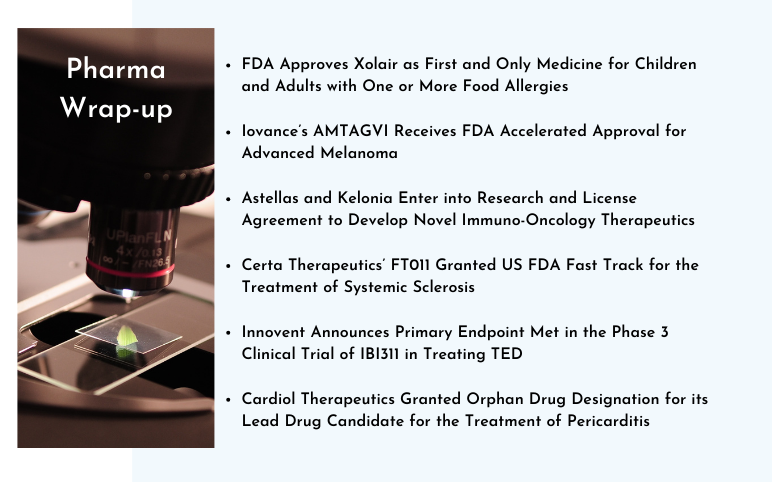Allergy Diagnostics: Unraveling the Science, Market Trends, and Future Prospects
Oct 18, 2023
Table of Contents
Allergies are on the rise globally, affecting millions of people and significantly impacting their quality of life. The ability to accurately diagnose and manage allergies is crucial for both patients and healthcare providers. With the rising prevalence of allergy, the demand for Allergy Diagnostics has increased manyfold. The field of Allergy Diagnostics has undergone a remarkable transformation, largely driven by the rapid advancement of technology. As per DelveInsight, the global Allergy Diagnostics market was valued at USD 4.58 billion in 2020, growing at a CAGR of 11.78% during the forecast period from 2023 to 2028, to reach USD 8.93 billion by 2028. This evolution has not only broadened the understanding of allergies but has also enhanced the ability to diagnose and manage them with unprecedented precision. The role of technology in allergy diagnostic products has been pivotal, revolutionizing the way healthcare providers identify and address allergies. From traditional skin tests to sophisticated molecular assays and telemedicine-enabled at-home testing kits, technology has diversified the range of diagnostic tools available, making them more accessible, efficient, and tailored to individual patient needs.
Companies are taking center stage in driving innovation within the Allergy Diagnostics market. Several major collaborations, mergers, and acquisitions have been registered in the market. These strategic alliances are reshaping the landscape of allergy diagnostics, enabling companies to harness synergies and deliver advanced solutions to meet evolving healthcare needs.
Downloads
Article in PDF
Recent Articles
- Dupixent Significantly Reduced COPD Exacerbations; Sosei Heptares to Regain Ownership of GSK43814...
- 8 Of The Most Common Foods Allergies – Do You Have One?
- FDA Approves Xolair for Food Allergies; FDA Accelerated Approval for Iovance’s AMTAGVI; Astellas ...
- Most Promising Therapies in the Food Allergy Treatment Market
- Revolutionizing the Food Allergy Treatment: The Impact of Xolair’s Approval
The Science of Allergy Diagnostics
Understanding allergies starts with grasping the science behind them. Allergies are exaggerated immune responses to usually harmless substances, such as pollen, pet dander, or certain foods. The immune system recognizes these allergens as threats and triggers an allergic reaction, which can manifest in a wide range of symptoms, from sneezing and itching to severe anaphylactic shock.
Allergies affecting individuals differently. They can be broadly categorized into specific types, including food allergies, drug allergies, inhalant allergies, and others. Food allergies involve hypersensitivity reactions to certain foods, such as peanuts, shellfish, or dairy products, and can lead to severe and sometimes life-threatening symptoms. Drug allergies manifest as adverse reactions to medications, potentially causing skin rashes or more serious responses. Inhalant allergies, like pollen or pet dander allergies, result from airborne allergens and often lead to respiratory discomfort. The “others” category encompasses a wide range of less common allergies, from insect stings to latex or even cold-induced allergies. Understanding these distinct allergy types is crucial for accurate diagnosis and effective management, as tailored approaches are necessary to address the unique triggers and symptoms associated with each category.
Allergy Diagnostics Products and Tests
Allergy diagnostics aim to identify the specific allergens that trigger the reactions. Allergy diagnostics products encompass a diverse range of offerings, categorized into two primary types: instruments and consumables. Instruments in the field of allergy diagnostics typically include cutting-edge devices such as immunoassay analyzers, flow cytometers, and molecular diagnostic instruments. These instruments play a pivotal role in quantifying and analyzing allergen-specific antibodies, enabling healthcare professionals to identify the precise triggers of allergic reactions. On the other hand, consumables represent an essential component of the allergy diagnostics process, providing the necessary reagents, test kits, and disposable items required for testing procedures. Consumables are indispensable for ensuring the accuracy and reliability of allergy diagnostic tests and are designed to complement the capabilities of diagnostic instruments. Together, instruments and consumables form a comprehensive ecosystem that empowers healthcare providers to diagnose allergies with precision and offer tailored treatment plans to patients, thereby enhancing their overall well-being.
Allergy diagnostic tests come in two fundamental types: in-vivo and in-vitro. In-vivo tests involve the introduction of potential allergens into the patient’s body to observe the immune response, most commonly through skin prick tests or intradermal injections. In contrast, in-vitro tests are conducted outside the patient’s body, typically through blood samples, measuring the presence of allergen-specific antibodies like IgE. Both test types serve essential roles in identifying and confirming allergies, and the choice between them often depends on factors like the patient’s medical history, the specific allergens in question, and the healthcare provider’s preferred diagnostic approach. This duality in diagnostic testing allows for a comprehensive assessment of allergic sensitivities and ensures accurate diagnoses tailored to individual patient needs.
Allergy Diagnostics Market Dynamics
The Allergy Diagnostics market is currently undergoing a transformative evolution, driven by a confluence of factors that highlight its growing importance in the healthcare industry. With allergies becoming increasingly prevalent worldwide, there’s a rising demand for accurate, efficient, and personalized diagnostic solutions. As per the WHO (2023), in 2019, asthma affected 262 million people across the globe. Furthermore, in the year 2020, adverse drug reactions accounted for about 3% to 6% of all hospital admissions, of which nearly 10% to 15% of cases were observed in hospitalized patients and about 25% of the cases in outpatient prescriptions.
As per the latest report from the American Academy of Asthma, Allergy & Immunology (2023), it’s estimated that allergic rhinitis impacts a substantial portion of the global population, ranging from 10% to 30%. Allergies can manifest with varying degrees of severity, from mild discomfort to potentially life-threatening situations. Hence, the significance of allergy testing becomes evident, as it plays a pivotal role in the identification of potential allergens capable of triggering immune responses.
This increasing prevalence of allergies on a global scale is expected to be a driving force behind the growing demand for allergy diagnostics. These diagnostic tests prove instrumental in pinpointing the specific allergen responsible for allergic reactions, thus facilitating the development of tailored diagnostic strategies. Consequently, this surge in demand is poised to propel the expansion of the global allergy diagnostics market.
In response, companies are at the forefront of this change, playing a pivotal role in shaping the industry. They are not only developing cutting-edge diagnostic technologies, such as advanced blood tests and molecular diagnostics but are also conducting extensive research and development to enhance the precision and reliability of allergy diagnostics.
Furthermore, the Allergy Diagnostics market is experiencing a surge in mergers and acquisitions as companies seek to expand their portfolios and capabilities. These developments underscore the market’s dynamism and its commitment to advancing healthcare outcomes. Overall, companies’ pivotal role in responding to the rising demand for allergy diagnostics and their active participation in shaping the future of this essential sector are contributing to better patient care and more effective healthcare delivery. The Allergy Diagnostics market is undoubtedly poised for continued growth and innovation in the years to come.
Evolving Trends and Challenges in the Allergy Diagnostics Market
The future of allergy diagnostics holds promise and some challenges:
- Enhanced Precision: Advancements in diagnostic technologies, such as component-resolved diagnostics, will offer more accurate and specific allergy profiles for patients, enabling targeted therapies.
- Telemedicine and At-Home Testing: The integration of telemedicine and at-home allergy testing kits is making allergy diagnostics more accessible and convenient for patients, especially in remote or underserved areas.
- Environmental Monitoring: Real-time environmental monitoring to predict allergy triggers will become more prevalent, enabling individuals to proactively manage their allergies.
- Overcoming Allergen Diversity: As new allergens emerge, the diagnostic field must adapt to identify these novel triggers, necessitating continuous research and development efforts.
Key Companies in the Allergy Diagnostics Market
Companies are assuming an instrumental role in shaping the landscape of the Allergy Diagnostics market. With the increasing prevalence of allergies and the growing demand for accurate diagnostic solutions, companies are at the forefront of driving innovation in this domain. Currently, some of the major MedTech and HealthTech giants such as HOB Biotech Group Corp., Ltd., Thermofisher Scientific, Siemens Healthineers, Danaher, Romer Labs Division Holding, EUROIMMUN Medizinische Labordiagnostika AG, HollisterStier Allergy, Eurofins Scientific, Omega Diagnostics Group plc, HYCOR Biomedical, R-Biopharm AG, AEKSU GROUP GmbH, ACON Laboratories, Inc, Lincoln Diagnostics, Inc, Astra Biotech GmbH, Erba Group, Hitachi Chemical Diagnostics Inc, Hemostasis Inc, BioMerieux SA, PerkinElmer Holdings Ltd and others are actively working in the Allergy Diagnostics Market.

These companies are not only developing cutting-edge diagnostic technologies but are also actively engaged in research and development, striving to enhance the precision and efficiency of allergy diagnostics. Furthermore, they are committed to providing a wide range of tests that cater to various allergies, including food, environmental, and drug allergies, making healthcare more personalized and effective. As the market evolves, there’s a clear trend of companies collaborating with healthcare institutions, research organizations, and even each other, fueling a surge in strategic partnerships, mergers, and acquisitions. These collaborations are accelerating the development of novel diagnostic tools and platforms that offer greater sensitivity and specificity, ultimately leading to more accurate and timely diagnosis. In this dynamic landscape, companies are not only playing a key role in responding to the rising demand for allergy diagnostics but are also actively shaping the future of this vital sector, ensuring better outcomes for patients and healthcare providers alike.
Recent Developmental Activities in the Allergy Diagnostics Market:
- In July 2021, IDS was acquired by PerkinElmer (UK) Holdings Limited, wherein the former has a product portfolio catering to allergy diagnostics.
- In July 2020, Thermofisher Scientific received regulatory approval from the US FDA for their ImmunoCAP Specific IgE alpha-Gel Allergen Component test for in-vitro use.
- In April 2019, Bluejay Diagnostics received the CE mark approval for their allergic conjunctivitis test- Allereye Tear Total IgE Test which is a non-invasive, point-of-care (POC) test for allergic conjunctivitis.
Key Conclusion and Analysis
The landscape of Allergy Diagnostics has undergone a remarkable transformation over the years. With the increasing prevalence of allergies worldwide, the need for accurate and efficient diagnostic tools has never been more crucial. This evolution has been strongly influenced by rapid technological advancements. Traditional methods, like skin prick tests, have been complemented and, in many cases, replaced by more sophisticated in-vitro tests, offering a higher degree of precision and reproducibility. Moreover, the integration of molecular diagnostic techniques has paved the way for personalized medicine in the realm of allergies, allowing for tailored treatment plans based on an individual’s specific allergen profile.
The commercial sector, recognizing the market’s potential, has responded with a wide array of innovative products, from handheld at-home testing kits to advanced immunoassay analyzers. Furthermore, regulatory developments are ensuring that these products adhere to rigorous standards, ensuring patient safety and reliability in allergy diagnostics. The future of the Allergy Diagnostics market appears promising, as it continues to expand and refine its offerings. Environmental concerns, such as air pollution and climate change, have put allergies at the forefront of public health discussions, further fueling the demand for advanced diagnostic tools. As technology continues to evolve and the understanding of allergies deepens, Allergy diagnostics devices are set to play a pivotal role in improving patient care and overall well-being, making it an exciting and dynamic domain within healthcare.

Downloads
Article in PDF
Recent Articles
- Most Promising Therapies in the Food Allergy Treatment Market
- FDA Approves Xolair for Food Allergies; FDA Accelerated Approval for Iovance’s AMTAGVI; Astellas ...
- Revolutionizing the Food Allergy Treatment: The Impact of Xolair’s Approval
- Dupixent Significantly Reduced COPD Exacerbations; Sosei Heptares to Regain Ownership of GSK43814...
- Neurotech’s ENCELTO Becomes First FDA-Approved Treatment for MacTel Type 2; Plus Therapeutics’ Rh...



